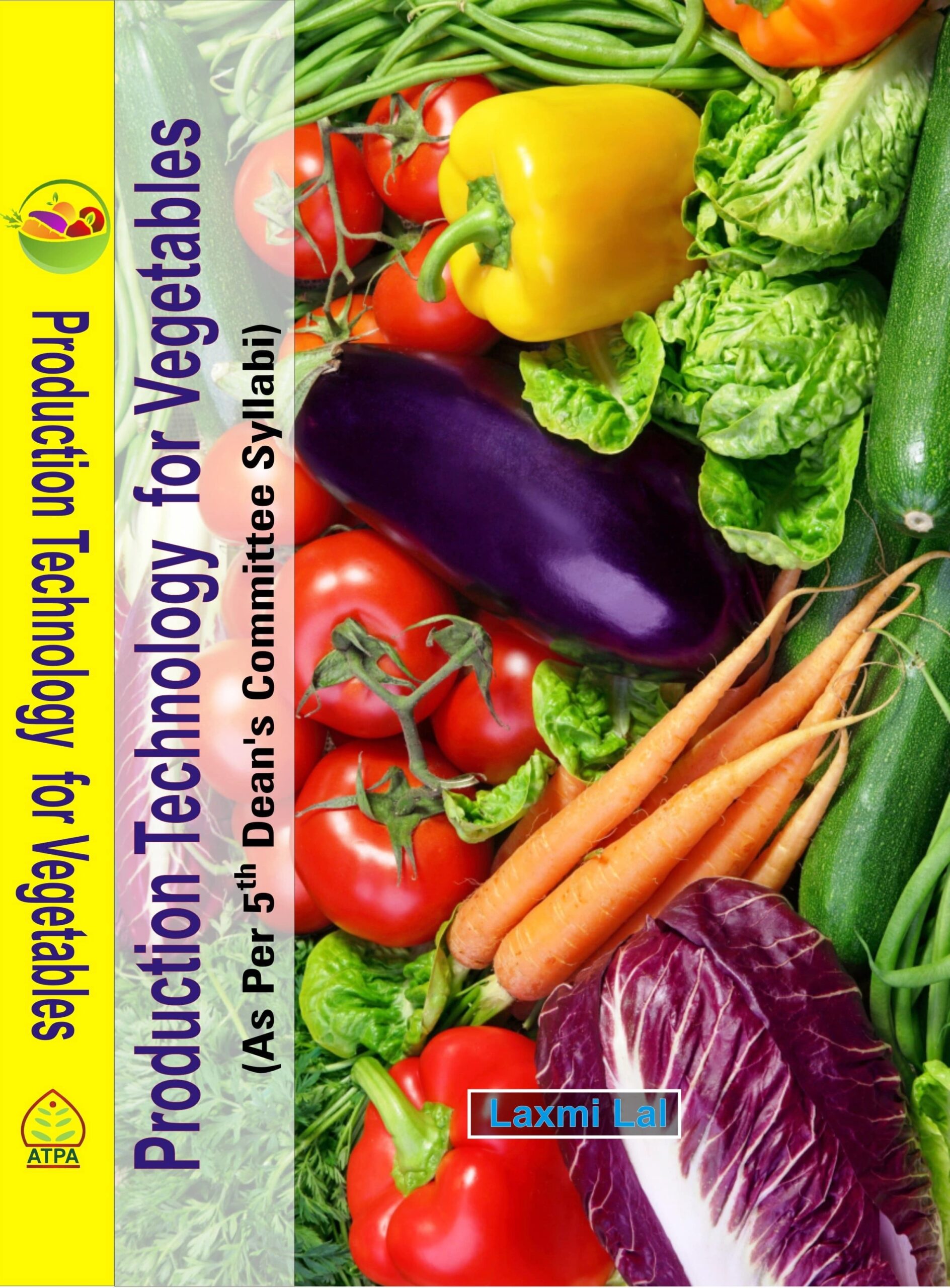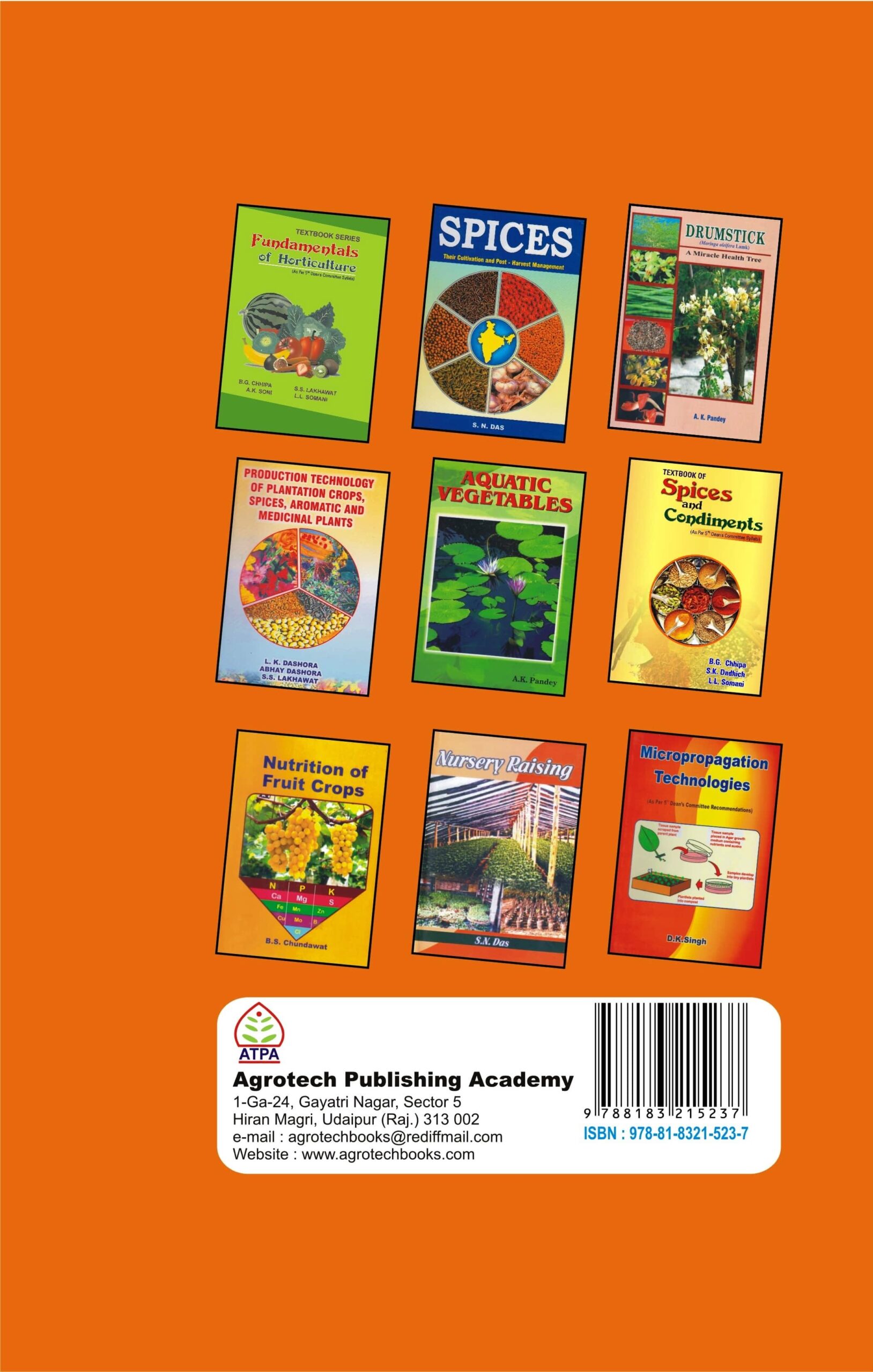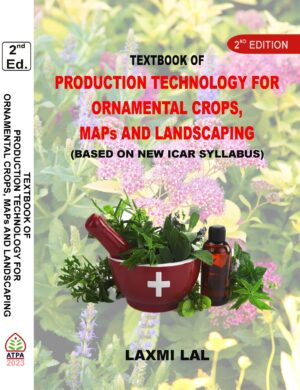PRODUCTION TECHNOLOGY FOR VEGETABLES
₹1,250.00
AUTHORS: LAXMI LAL
PUBLISHING YEAR: 2020
ISBN: 9788183215237
© All Rights Reserved
Description
ABOUT THE BOOK
The significance of vegetable crops and spices crops has been known since time immemorial in India. The demand of vegetables is increasing day by day as majority of Indians are vegetarians, and vegetables make the diet palatable, nutritive and balanced. They are rich sources of vitamins, proteins, minerals, carbohydrates, and roughages. A sound and basic knowledge of vegetable production is therefore pre-requisite in improving the productivity per unit of land and water resources.
Looking to the importance and utility of vegetable crops the book entitled “Production Technology for Vegetables” is being proposed which will be useful for the under-graduate students of Agriculture as well as Horticulture of all the SAUs as it has been organised to incorporate the entire syllabi recommended by 5th dean’s committee of ICAR. I hope that this effort shall benefit not only students of Agriculture/Horticulture but also those who are involved in the production and promotion of vegetables. This books includes information regarding package of practices of all the important vegetable crops prescribed by the 5th dean’s committee of ICAR, based on the personal experience, available research and reports from various seminars/conferences/workshop on these crops. The book deals with importance, classification and production technology of the important vegetable crops.
CONTENT
| S. No. | Title | Page |
| 1 | Preface | 3-4 |
| 2 | About the book | 5 |
| 3 | About the authors | 6 |
| CHAPTERS | 9 | |
| 1 | Importance and scope | 11-24 |
| 2 | Types of vegetable farming | 25-32 |
| 3 | Classification of vegetable crops | 33-46 |
| 4 | Postharvest handling of vegetables | 47-51 |
| 5 | Potato | 52-59 |
| 6 | Tomato | 60-74 |
| 7 | Brinjal | 75-87 |
| 8 | Chilli | 88-99 |
| 9 | Cauliflower | 100-113 |
| 10 | Cabbage | 114-129 |
| 11 | Knolkhol | 130-138 |
| 12 | Radish | 139-145 |
| 13 | Turnip | 146-151 |
| 14 | Carrot | 152-159 |
| 15 | Beet root | 160-164 |
| 16 | Onion | 165-175 |
| 17 | Garlic | 176-186 |
| 18 | French bean | 187-194 |
| 19 | Cowpea | 195-201 |
| 20 | Cluster bean | 202-204 |
| 21 | Dolichos bean | 205-210 |
| 22 | Cucumber | 211-213 |
| 23 | Bottle gourd | 214-218 |
| 24 | Bitter gourd | 219-224 |
| 25 | Sponge gourd | 225-227 |
| 26 | Ridge gourd | 228-231 |
| 27 | Round gourd/Squash melon | 232-235 |
| 28 | Pumpkin | 236-238 |
| 29 | Pointed gourd | 239-244 |
| 30 | Sweet potato | 245-251 |
| 31 | Bhendi/Okra/ladiy’s Finger | 252-259 |
| 32 | Peas | 260-271 |
| 33 | Lettuce | 272-276 |
| 34 | Celery | 277-281 |
| 35 | Spinach | 282-287 |
| 36 | Capsicum | 288-398 |
| Literature Cited | 399-400 | |
ABOUT THE AUTHOR
L.L. Somani is Retired Director Resident Instructions, MPUAT, Udaipur. He has over 400 research and technical articles to his credit. He has authored/edited over 165 scholarly books in various field of agriculture. Prof. Somani has been honored with several academic excellence awards for his outstanding achievements.
Additional information
| AUTHOR/AUTHORS | LAXMI LAL |
|---|---|
| PAGES | 400 |
| BINDING | Hard Back |
| PUBLICATION YEAR | 2020 |





